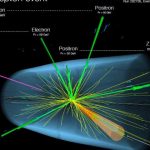‘Guardians’ of the galaxy: US Space Force members get a new name0
- From Around the Web, Space
- December 22, 2020
Mike Pence says “soldiers, sailors, airmen, Marines and guardians will be defending our nation for generations to come”.

Mike Pence says “soldiers, sailors, airmen, Marines and guardians will be defending our nation for generations to come”.

Wooden fragment from at least 3000BC discovered by chance by Egyptian university researcher

Most of the alien civilizations that ever dotted our galaxy have probably killed themselves off already.

A very rare, once-in-a-lifetime celestial event will shine brightly in the sky on Monday evening – weather permitting, of course.

Most insects can fly. Yet scores of species have lost that extraordinary ability, particularly on islands.

China now joins the ranks of the U.S. and the former Soviet Union in pulling off the feat.

It’s just a matter of time before we build one that can take us into the far future.

Neural networks are some of the most important tools in artificial intelligence (AI): they mimic the operation of the human brain and can reliably recognize texts, language and images, to name but a few.

Some believe it’s an extraterrestrial spacecraft. NASA says it’s probably just space junk. Here are the facts.

The Standard Model, the most exhaustive existing theory outlining fundamental particle interactions, predicts the existence of what are known as triboson interactions. These interactions are processes in which three-gauge bosons are simultaneously produced from one Large Hadron Collider event.